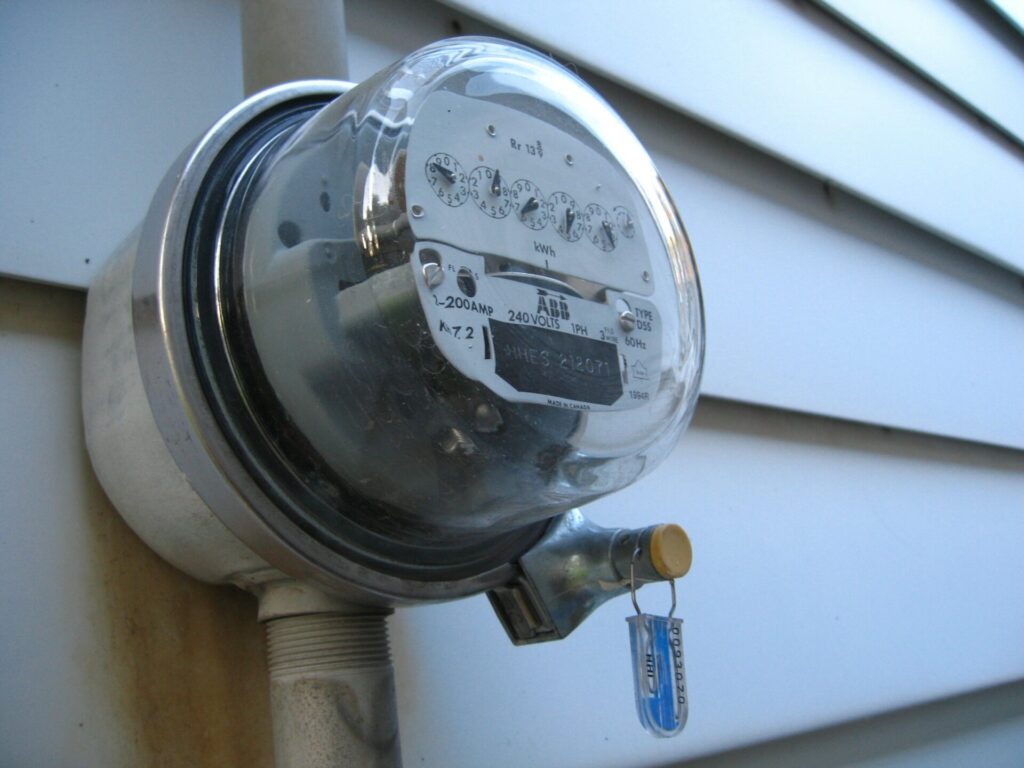
Building a new home? Replacing your existing air conditioning unit? Just interested in learning about air conditioning, because you’re caught up on all your shows and need a reason to put off doing the laundry?
Then it’s a great time to learn about SEER ratings!
SEER (Seasonal Energy Efficiency Ratio) and its newly adopted replacement, SEER2, are measures of a particular air conditioning unit’s—you guessed it—energy efficiency. There’s a lot of math, physics, and engineering that goes into calculating a unit’s SEER and SEER2 ratings, but as a consumer, there’s really only one thing you need to remember:
An air conditioner with a high SEER/SEER2 rating is more efficient than a unit with a low rating.
Is that it? Nah, we’ve got more to say!

Your Air Conditioner Uses a LOT of Electricity
Unless you’re running a welding shop out of your basement or have removed the doors from your refrigerator, the HVAC system is the single largest consumer of electrical power in your home. Its efficiency, or inefficiency, is a major driver in determining whether your summer electrical bill is a manageable expense or a budget-crushing monster.
Overall, air conditioners consume about 12% of all residential electrical power in the US. Here in Middle Georgia, that number skyrockets up to a sweltering 27%.
According to the US Department of Energy, upgrading to a more efficient air conditioning unit can reduce energy expenditures by up to 50%.
That’s a lot of stats, but the takeaway is this: knowing what a SEER rating is and how to use it to find the most efficient air conditioner possible for your home or business is going to save you money.
Knowing SEER Ratings Can Save Me Money? Tell Me More!
SEER ratings are a quick and easy way to compare the efficiency of various air conditioning units. We’ll get more into the details later, but – in short – a SEER rating is a measure of a unit’s cooling power per unit of electricity, and a higher SEER rating tells you that a particular air conditioner is more efficient.
Take a look at the following table:
| Air Conditioner SEER Rating | Annual Energy Costs* |
| 10 | $475 |
| 12 | $396 |
| 14 | $339 |
| 16 | $297 |
| 18 | $264 |
| 20 | $237 |
*Assuming a 3-ton A/C unit running 1,000 hours/year at an energy rate of $0.1319/kilowatt-hour
The US Department of Energy sets minimum standards for the efficiency of new air conditioners sold and installed. Here in the Southeast, where air conditioners have to work even harder to bring temps down to comfortable levels, efficiency standards are higher than in the rest of the country:
| System Type | Minimum SEER | Minimum SEER2 |
| Split system ACs (Less than 3.75 tons) | 15 | 14.3 |
| Split system ACs (3.75 or more tons) | 14.5 | 13.8 |
| Split system heat pumps | 15 | 14.3 |
| Package units | 14 | 13.4 |
How Is a SEER Rating Calculated?
Science Alert: The following section of this article contains some detailed scientific-type information that may not be of interest to anyone except your local air conditioning pros at Pruett. We apologize in advance for any unintentional naps caused by the next few paragraphs.
To understand how a SEER rating is calculated, you first must understand that there is no such thing as cold.
Just hang on, we’ll explain.
“Cold” is how we as human beings define “not hot.” So, in actuality, an air conditioner doesn’t make anything colder – it simply makes the air in your home less hot, by removing heat energy from the air.
To figure out an air conditioning unit’s SEER rating, the manufacturer determines how much heat the unit removes from a standard volume of air, measured in British Thermal Units (BTUs – yes, the same BTUs that we use to measure a heater’s output).
They then divide that by the unit’s power consumption in watt-hours (yes, the smaller cousin of the kilowatt-hours your electric company uses to determine your electric bill each month).
The actual formula is a little more complex than that, taking a number of variables and factors into account, but that’s the general idea.
The resulting number is a unit’s SEER rating, with a higher number indicating that more heat is being removed from your home per unit of electricity consumed.
The calculations for SEER2 are basically the same, except the unit’s performance is measured under conditions that more closely resemble the real-world conditions these units experience, essentially by increasing the amount of pressure being produced by the system’s blower unit. Long story short, a SEER2 rating is more accurate, and is usually about 4.5% lower than a traditional SEER rating.
Thank you for attending our TED Talk.
So, What’s a Good SEER Rating?
There are a lot of factors that go into determining which air conditioning unit is right for your home or office. While efficiency should be high on the list of things you’re taking into consideration, there are certainly other concerns. That being said, when it comes to deciding on an air conditioner, you should choose the highest SEER rating that you can afford.
It’s also important to note that a SEER rating is a measure of an air conditioner’s highest possible efficiency. Other factors can cause a particular unit’s actual efficiency to drop below the rated SEER value:
- Poor home insulation, or leaky windows/doors
- Uninsulated or leaky ductwork
- Pairing a high-efficiency outdoor unit with a lower-efficiency indoor unit
- Running the unit more or less than recommended, setting extremely low thermostat temps, or other inefficient operating practices
- Having a bunch of young’uns leaving the front door open all the time so that you end up air conditioning the whole dad-gum neighborhood (or maybe that’s just us?)
That being said, with all other things being equal, a higher-SEER unit will always be more efficient than a lower-SEER.
How Do I Find the SEER Rating?
To find a unit’s SEER rating, look in one of two places:
- On the yellow EnergyGuide sticker located somewhere on the unit
- On the manufacturer’s “data plate,” the sticker or placard that contains the unit’s model and serial numbers. The SEER/SEER2 rating will be one of the data points included on the table of specifications.
If you can’t find either of these labels (or if you don’t have the unit in front of you), your air conditioning supplier will be able to tell you the SEER rating for a particular unit.
Hot? Cold? Call the Man! Pruett Air Conditioning Carries a Full Line of Efficient Carrier Air Conditioning Units.
There’s no need to sweat the summer heat. When you have air conditioning needs, let Pruett do it! Our technicians are ready to install your new efficient Carrier air conditioner! Call today 478-953-4986
Pruett Air Conditioning has offices in Warner Robins and Eastman, GA, so no matter where in Middle Georgia you’re located, Pruett is your local HVAC company.
- Bonaire
- Byron
- Centerville
- Cochran
- Dublin
- Eastman
- Fort Valley
- Kathleen
- Macon
- McRae
- Perry
- Warner Robins

